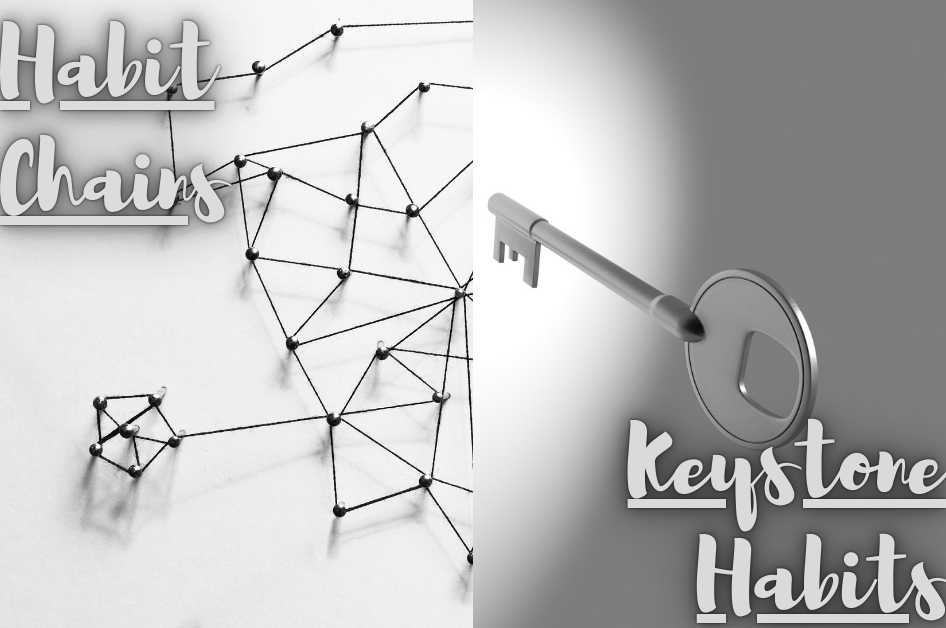5 Solid Steps To Building Unbreakable Habits
Chris Chan, Digital Marketing Consultant
January 9th, 2021
According to Atomic Habits author James Clear, building a new habit takes approximately 66 days.
66 days, that’s over 2 months just to build one habit!
A pretty long time to solidify one simple change in your life, isn’t it?
Don’t worry, I’ve got you covered.
Here are 5 foolproof steps to building habit chains and keystone habits.
66 days, that’s over 2 months just to build one habit!
A pretty long time to solidify one simple change in your life, isn’t it?
Don’t worry, I’ve got you covered.
Here are 5 foolproof steps to building habit chains and keystone habits.
This post contains a few Amazon Affiliate links. If you click them and purchase you’ll be supporting me at no extra cost to you 🙂

What are Habit Chains and Keystone Habits?
Habit Chains: The cyclical linkage of different repeated behaviors that occur consciously or unconsciously that make up portions of a person’s life.
Keystone Habits: The single (or most important) habit that triggers the trickling of other habits in the habit chain.
“The first step to change is understanding the present.”
Step 1: Become Aware of All Current Habits
Whether you like it or not, you have habits.
If you brushed your teeth this morning, you have a habit. If you didn’t, you still have a habit, just not a particularly hygienic one.
The first step to change is understanding the present.
Become aware of your current habits and simply observe.
In this stage of habit development, you’ll want to write down everything that you habitually do (aside from appointments and irregularities) every day for a week.
Step 2: Tackle Your Mornings and Evenings
Got your current habits tracked? Good, you’ll need them.
Now it’s time to restructure your habits.
The best place to start with shifting habit chains is by targeting the beginning and the end of your days.
You don’t need to have an all inclusive morning routine that begins with a yogic chanting ritual and ends with journaling about the existential meaning of your life.
Choose one thing.
Make it something simple that you can stick to.
Then do the same thing for your evenings.
Here are some examples of simple morning habits:
- Drink 8 ounces of water after getting up from bed.
- Do 10 push ups.
- Write the top 3 tasks you want to get done today.
- Breathe deeply for 2 minutes.
Some amazing evening habits include:
- Read a book for 5 minutes.
- Follow a 10 minute stretching video.
- Quickly jot down the 5 most productive actions you took today
The simpler, the better.
Related: 5 Reasons to Read a Book a Week (3 Reasons Not To!)

Step 3: List and Prioritize All Habits
Now it’s time to take your habits to the next level.
Brain dump all of your potential habit ideas (make sure each one of them can be done in under 20 minutes so that they can be chained effectively).
Then rank each habit by the level of intention, motivation, and urgency you feel for achieving it.
Answer these basic questions:
- What is the habit you are trying to implement?
- Why exactly do you want it?
- What circumstance or life application does it fill (how will you use it)?
- How will you feel when you start doing it?
- What larger life goal does this habit point towards?
Once you’ve gotten reasonable answers to these questions it’s time to rank your morning/evening habits in an order of importance and priority.
Step 4: Take Action. Start With One Keystone Habit
Now is the time to act!
Take one habit and implement it for a week. Attach this habit to a current habit that you already have.
This works perfectly if you are trying to decode one habit and encode another one.
Let’s say that you check the Gram every morning but you want to prioritize your hydration and reading instead.
Tonight, put your phone out of reach and put a bottle/glass of water (that won’t spill!) and a book on your night stand.
Taking this action consistently and shifting your environment will reinforce real change in your habits.

Step 5: Adjust and Optimize
Once you’ve got your habits down, feel free to adjust them to your liking.
It’s tempting to fit a certain stereotype of productivity, but true productivity in habit building means staying true to you.
Stay true to the type of person that you want to be. Check in ever couple of weeks to make sure that your habits are lining up with your current goal.
If you want to learn how to use the Wim Hof Method to boost your productivity click here!
What habit will you set today? Comment below with your answer 🙂
Class Dismissed,
Chris Chan
Ready to Level Up Your Brand?
Subscribe to My Awesome Newsletter.
